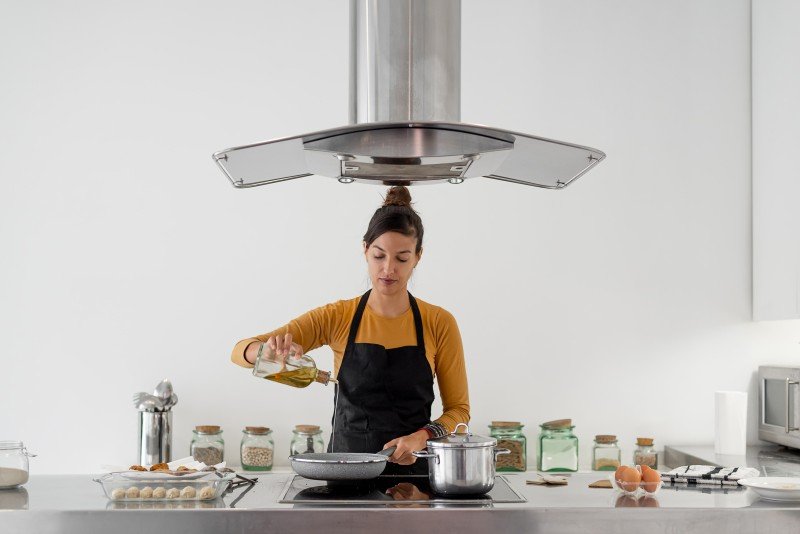10 Hob And Oven Tricks Experts Recommend
Understanding Hobs and Ovens: The Essential Kitchen Appliances
In the world of kitchen devices, couple of products are as important as hobs and ovens. in the know form the foundation of cooking activities, making it possible for people to produce everything from easy meals to elaborate banquets. Understanding the differences, types, and performances of hobs and ovens can significantly enhance one's cooking experience. This short article looks into the complexities of hobs and ovens, supplying insights that accommodate both beginner and experienced cooks.
What Is a Hob?
A hob, often described as a cooktop or range top, is the flat surface on which pots and pans are placed for cooking. Hobs are equipped with heating components that produce the required heat for cooking food. They can be found in various kinds, consisting of gas, electric, induction, and ceramic options. Each type offers distinct benefits and disadvantages.
Kinds of Hobs
Gas Hobs:
- Heat Source: Natural gas or lp.
- Advantages: Instant heat control and responsiveness, chosen by numerous chefs for precise cooking.
- Disadvantages: Requires a gas connection and can be less energy-efficient.
Electric Hobs:
- Heat Source: Electric coils or smooth glass-ceramic surface areas.
- Advantages: Generally much easier to clean up, even heating, and extensively offered.
- Drawbacks: Slower to warm up and cool down compared to gas.
Induction Hobs:
- Heat Source: Electromagnetic currents.
- Benefits: Quick heating, energy-efficient, and only warms the pots and pans, not the surrounding surface area.
- Drawbacks: Requires compatible pots and pans (ferrous materials).
Ceramic Hobs:
- Heat Source: Electric and has a smooth glass surface.
- Advantages: Sleek look, simple to tidy, and even heating.
- Downsides: Can take longer to warm up and cool down.
What Is an Oven?
An oven is an enclosed appliance that cooks food by surrounding it with dry heat. Ovens can be standalone units or combined with hobs in a single home appliance understood as a range. Ovens are flexible tools that can be utilized for baking, roasting, broiling, and more.
Kinds of Ovens
Conventional Ovens:
- Heat Source: Electric or gas.
- Benefits: Good for conventional baking and roasting.
- Downsides: Can have irregular heat circulation.
Convection Ovens:
- Heat Source: Electric or gas with a fan for distributing air.
- Advantages: More even cooking and quicker cooking times due to airflow.
- Drawbacks: Can be more expensive and may need adjustments in cooking times.
Microwave Ovens:
- Heat Source: Microwaves.
- Benefits: Quick cooking and reheating; excellent for defrosting.
- Drawbacks: Can not brown or crisp food well.
Steam Ovens:
- Heat Source: Steam generation.
- Advantages: Retains nutrients and wetness in food, healthier cooking alternative.
- Drawbacks: Longer cooking times and normally higher cost.
Secret Differences Between Hobs and Ovens
While hobs and ovens serve the primary function of cooking food, their performances and uses vary substantially. The following table sums up these crucial differences:
Feature
Hob
Oven
Cooking Method
Direct heat
Enclosed heat
Primary Use
Boiling, sautéing, frying
Baking, roasting
Heat Source
Gas, electric, induction
Gas, electric, steam
Cooking Area
Flat surface
Enclosed area
Cooking Time
Normally faster
Differs based on dish
Control & & Precision
Immediate and direct
Depend on settings and timers
Benefits of Using Hobs and Ovens Together
Integrating using a hob and an oven can considerably boost the cooking process. Here are some benefits:
- Versatility: Different kinds of food can be prepared concurrently.
- Effectiveness: Using both permits different cooking techniques, such as burning on the hob and baking in the oven.
- Time-Saving: Multi-tasking can significantly decrease general cooking time.
Maintenance and Care
To make sure the longevity of hobs and ovens, routine upkeep is essential. Here are some suggestions:
For Hobs:
- Clean spills immediately to prevent staining.
- Usage proper cleaners for specific products (e.g., ceramic cleaner for glass-ceramic hobs).
- Frequently check gas connections for leaks (for gas hobs).
For Ovens:
- Wipe down the interior after each use to avoid accumulation.
- Use self-cleaning functions if available, or use oven cleaners for tough stains.
- Regularly inspect seals and gaskets for wear and tear (to maintain heat effectiveness).
FAQs About Hobs and Ovens
1. What is the best kind of hob for a newbie cook?
Answer: A ceramic or electric hob is typically suggested for beginners due to ease of usage and cleansing.
2. Can I use any cookware on an induction hob?
Answer: No, induction hobs need cookware made from magnetic products (e.g., cast iron or stainless-steel).
3. How typically should I clean my oven?
Answer: It is recommended to clean your oven every few months, or more often if you use it often.
4. Is it better to bake in a convection oven?
Answer: Yes, stoves are frequently better for baking as they offer even heat distribution. Nevertheless, some fragile recipes may gain from traditional ovens.
Understanding the functionality and distinctions in between hobs and ovens is essential for any cooking lover. Whether one chooses the immediate heat of a gas hob or the accuracy of an induction cooktop, each type provides special benefits. Similarly, ovens vary extensively in function, from standard baking to steam cooking. By appreciating these devices' roles in cooking, cooks can enhance their cooking abilities and improve their kitchen activities.
